Against The World
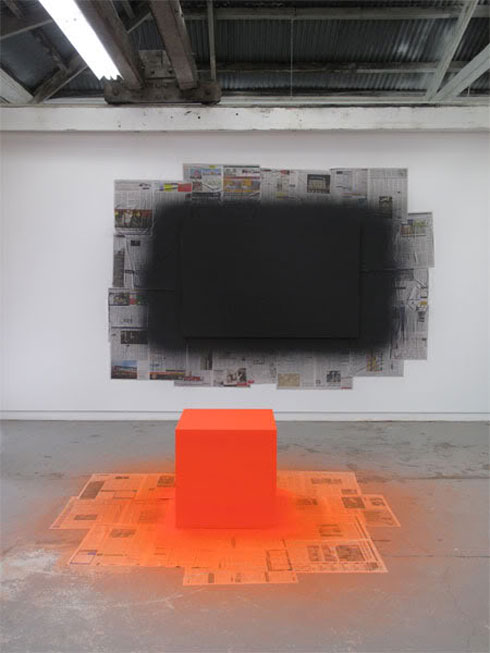
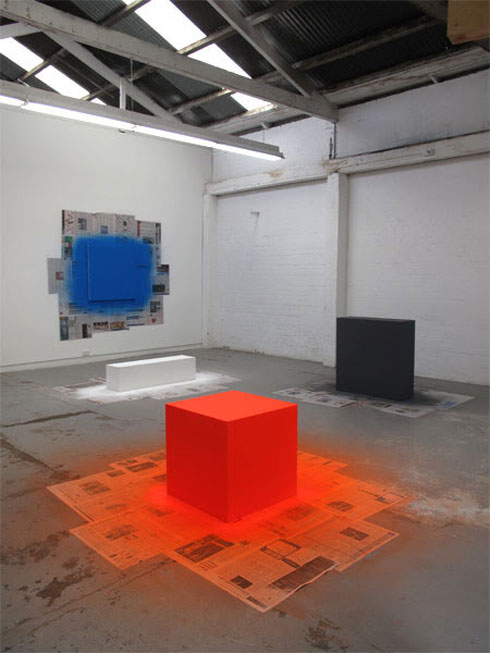
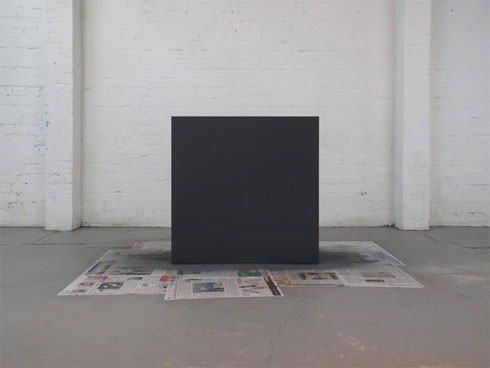
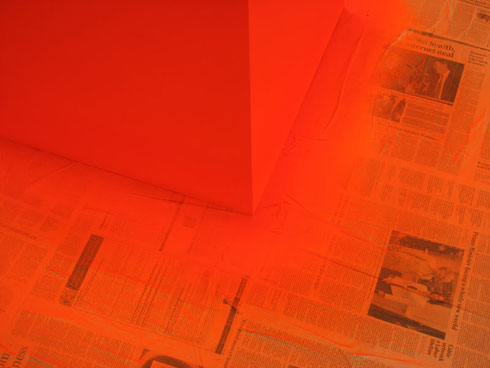
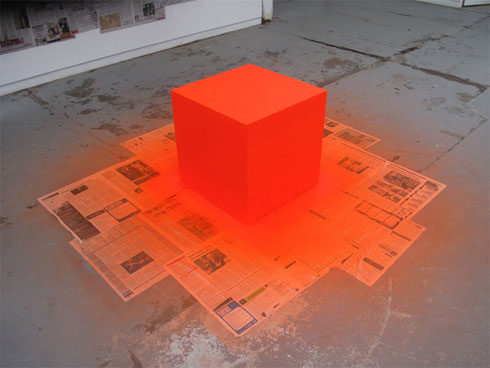 Text: Melissa Loughnan Images: Daniel du Bern
Text: Melissa Loughnan Images: Daniel du Bern
Daniel du Bern is an artist who has lived across Australia and New Zealand, having received his formal training in New Zealand at Massey University, Wellington. His largely conceptual practice is motivated by politics, architecture, urban environments and art historical canons. Moving between painting, collage, sculpture and installation, his work is distinctly ‘defiant’ — concerned with appropriation, manipulation, negation, and industrial and architectural methodologies. Melissa Loughnan recently caught up with Daniel to discuss his practice and upcoming projects.
Melissa Loughnan: Can you explain the thought processes behind your last solo exhibition, Contra Mundum, held at Y3K gallery last year?
Daniel du Bern: Literally translating as ‘against the world’, the meaning of Contra Mundum is to defy everything; or to defy faith/belief. I was drawn to this term and it became something of a maxim for me. This concept of absolute defiance is certainly something that I would consider a cornerstone within the thinking behind my art (and my desire to make). When I think about making in art the notion of creation bears little or no relevance; instead it is ideas of appropriation and manipulation that I am primarily concerned with.
Speaking generally, the true irony is that newness celebrated in art is seldom or never actually original. It can’t be. For when it is this, it is shunned or overlooked, quite simply because it is incomprehensible (as it stands outside of one’s field of understanding). Instead what we consider new are subtle and novel manipulations and reconfigurations of forms, which we understand as constituting art (be they physical or conceptual). My practice is no different from this; I am just doing it self-consciously. Put simply Contra mundum is concerned with two things – first, negation, and second, making and work.
For a number of years now I have been making work, which deliberately mimics various canonical signifiers that we associate with abstract (or non-objective) painting and installation, but uses them to slightly different ends. For instance I have previously made monochromatic paintings that are illustrations of political flags, or more recently colour field paintings that are based on the white painted windows of vacant shop-fronts. Contra Mundum is less of a clear-cut representation but their appearance nevertheless make clear reference to processes of industrial fabrication. (Also, newspapers are important in this work.)
ML: Can you expand on the importance of newspapers in Contra Mundum, and in your work more generally?
DDB: I find newspaper to be a fascinating object. While its primary purpose we know to be the distribution of editorial news and advertising via text and image, it is also, simultaneously, an object of ultimate disposability, and the paper upon which these words are printed have been set to countless tasks. A main function is of course as providing protection to other objects (or surfaces) through wrapping, covering, masking. So when I look at newspapers they are both of these things – paper and news. Information, waste and utility. It’s inherent simultaneity that I am drawn to, and I deliberately use it as a signifier of such.
ML: Your work often has a political undertone. How has your interest in politics influenced your practice?
DDB: There are politics in everyone’s work should you choose to see them. Work is often considered to be ‘political’ if it provides a viewpoint that stands outside of the norm, be it left or right wing; or if it appears dogmatic or polemical. It is definitely true that much of my earlier work had political edge. I think it is less clear of the work that I’ve made in the past three to four years.
The politics are still there but in a more oblique, less cut-and-dry way. I guess my work has mellowed, as I have changed the manner in which I choose to conduct myself with regards to politics (but this is not to say that my political views have necessarily mellowed). Look, I guess what I’m really saying is that I decided a while back that if you really want to bang a drum you’re better off buying yourself a soapbox or joining a political party. Political art often seems little more than an exercise of either preaching to the converted or wasted breath.
Art is a matter of asking questions rather than making statements. It is about engaging people and encouraging them to think, to consider those things around them, to stimulate thought and enquiry. And it is because of this reason alone that ‘political art’ seems so often to fall down.
ML: In Antonio Hardt and Michael Negri’s now-canonical book Empire (2000), they refer to the stubborn, unflinching character of Bartleby the Scrivener (from Herman Melville’s book Bartleby, the Scrivener: A Story of Wall Street) as a positive figurehead of the political ‘multitude’ precisely because of his defiance of or resistance to everything: refusal to write, work, obey etc. What are you resisting in your work? Or is it the concept of resistance more broadly that you are interested? — i.e. do you see defiance as a bigger abstract concern than aesthetics?
DDB: Yes, I think that the concept of resistance is more important that actually resisting something in particular, that is if we are talking about art specifically. My reason for thinking this is based upon my understanding of how art functions. I feel that art should function to confront, and to solicit a reaction. Now this is not to say that I don’t have my own beliefs or political persuasions or that I wish to make light of persecuted oppressed peoples, but they are simply not relevant to the art. Persuasive and decisive language sits in the political realm. Art on the other hand remains obtuse and esoteric. Art shouldn’t be about dogma. Art should be about openness and the individual. It is a philosophical and intellectual pursuit and thus it should be treated as such. Aesthetics are a vehicle for the convenience of ideas and nothing more. It provides the mesh through we can collectively perceive things and communicate intersubjectively.
ML: You’re currently developing new work for a group exhibition at Utopian Slumps, Impossible Objects II, opening on July 21. Can you describe the work you will be exhibiting?
DDB: I’ll be making work that is quite similar to Contra mundum and related works. Glass, abandoned buildings, modernism and detritus.
Dan Du Bern



